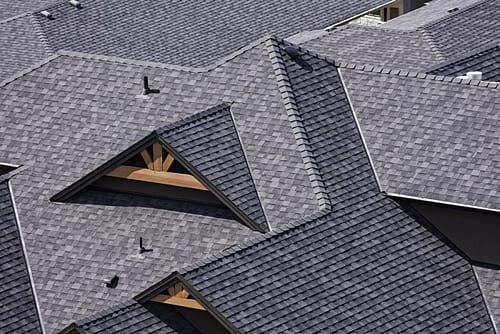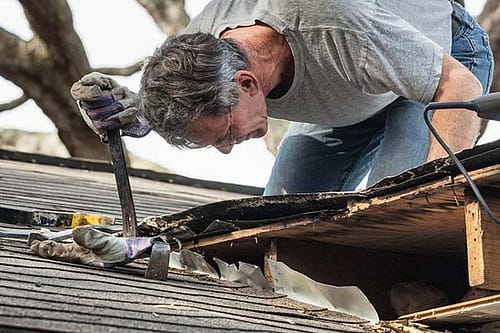Possible Roof Coverings For A Sloping Roof:
1) Ceramic roof tiles and concrete tiles:
Roof tiles have been used for centuries as a roof covering for a sloping roof. In the past, it was mainly ceramic roof tiles (made of clay) that were used, but nowadays you can also choose from a wide range of concrete tiles.
Roof tiles last a very long time and the prices are not too bad. In addition, they are also available in various forms. For example, there are hollow and flat roof tiles.
Panning: tips:
- Are you going to renovate your sloping roof? Then choose pans with a deep closure. As a result, the roof is well protected against heavy rain, wind, and drifting snow.
- You best cut as few pans as possible. After all, the closures are usually made fairly wide, so that the pans can be moved both horizontally and vertically.
- To increase the ventilation under the pans, you can use a special bottom ridge film.
- It is best to have the bottom pans cross 2/3 in the gutter. Special attention must be paid to the accommodation. This should connect well to the gutter. The lower pans are well supported by using a double pan lath.
2) Slates:
Laying slates on a sloping roof requires more expertise from the installer than is the case with laying tiles. The advantage of slates is that you can create many roof shapes with them and that they can also be perfectly integrated into the facade.
Placing a slate roof is a lot more labor-intensive than laying roof tiles. As a result, the cost can increase considerably, especially when using natural slates.
Placing slates: tips
- The slates are laid on pan battens with the distance being the same everywhere, with the exception of the first row of slates.
- Allow for a correct overlap between the slates. This depends on the roof pitch. The lower the roof pitch, the greater the overlap. If there is insufficient overlap, the roof will not be watertight or sufficiently waterproof.
- Unlike slate tiles, no special fittings are usually required for slates. The finishing is usually done with lead.
- Are you going to remove old slates? Keep in mind that they may contain asbestos. If the slates are still in reasonable condition (and easy to remove) you can replace them yourself. Strongly weathered materials containing asbestos should be removed by a special asbestos removal company.
3) Wicker cover for the sloping roof:
Nowadays, thatched roofing is mainly used on sloping roofs of rural homes. Applying the reed is specialist work and therefore only reserved for professional roofers.
Since it is a fairly labor-intensive job, the reed is not one of the cheapest types of roofing material. A thatched roof also needs more maintenance than other types of roofs.
4) Zinc:
You can also finish a sloping roof with zinc. Zinc roofs are nowadays mainly used in modern homes with different or special roof construction.
Installing a zinc roof is a job for specialized roofers. With a sloping roof, the ‘standing seam system’ is generally applied, but zinc can also be applied in sheets or in the form of zinc slates.
How to make a sloping roof watertight?
The sloping roof must offer good protection against the weather. To guarantee the water tightness of a sloping roof, a shelter is therefore often installed. This is extra protection that will lie between the roof covering and the insulation material. Lower roofs ensure that the insulation and roof construction is not affected by dirt and moisture.




